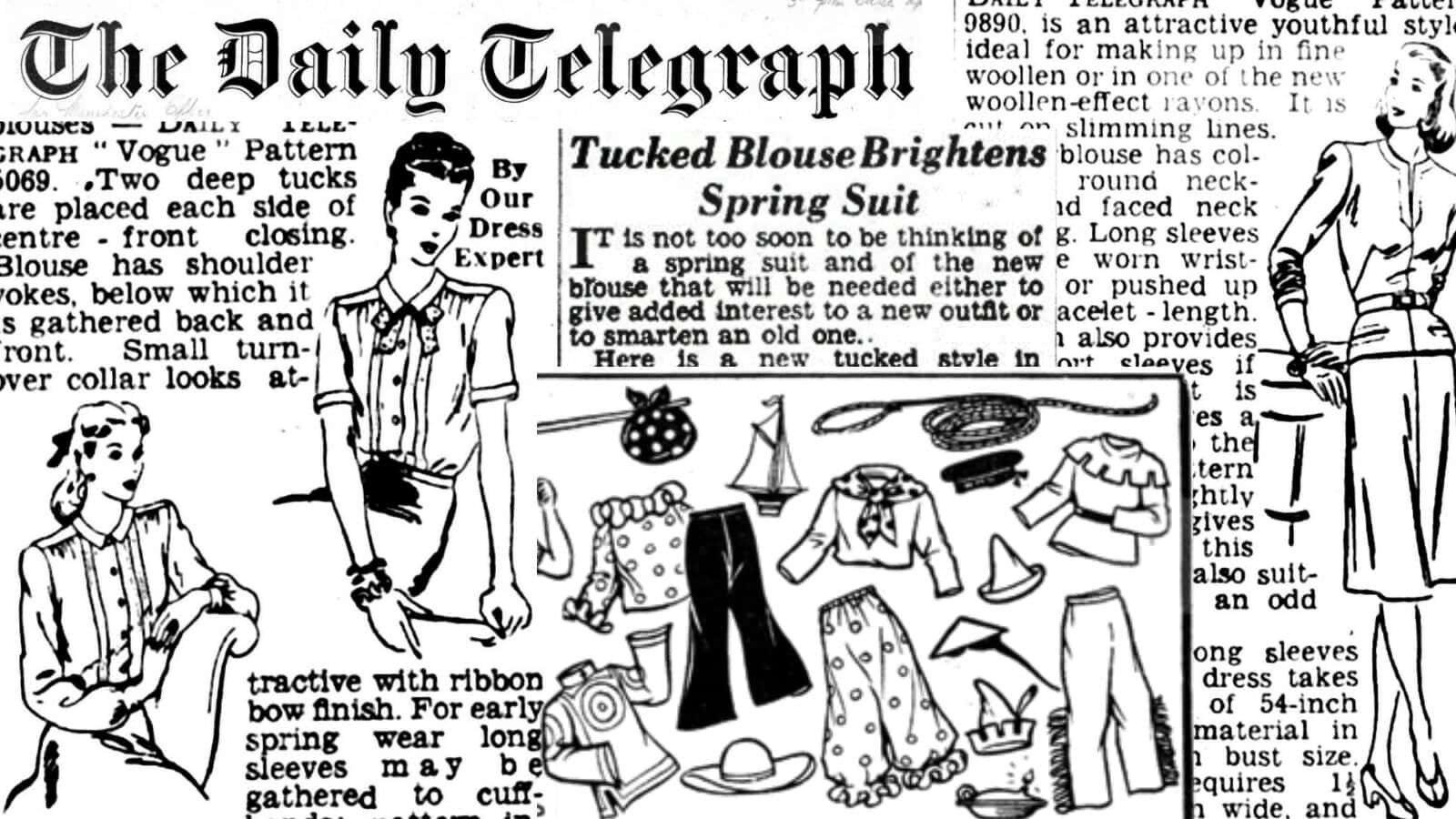│By Nonkoliso Tshiki, Gale Ambassador at the University of Johannesburg│
Do you find writing for academic purposes challenging? I did too. However, I have recently discovered and started implementing a new and exciting trick to improve my writing skills, which also ignites greater interest in my writing. I write short essays about topics which I come across and find interesting. For instance, when I was going through lecture notes about writing a research proposal a couple of months ago, I stumbled upon an article exploring the evolution of global fashion trends between 1945-1965, and I thought to myself, “this is quite interesting, I would like to know more about this topic!” Then all I needed was a research database that offers accredited, valuable and interesting sources. Luckily for me, I did not have to look too far because, as a Gale Ambassador, Gale Primary Sources is one of my very first go-to and most favourable research databases. Thus, the following blog post uses Gale Primary Sources to explore some of the fashion trends that made fashion headlines 1945-1965.
Padded-Shoulders and Boxy Lines to Tucked Blouses and Slimming Designs
The end of the Second World War saw the rapid fade of a few fashion trends that were dominant during and prior to the war. Padded shoulders and tubular, boxy lines were swiftly replaced by a new wave of fashion ‘must-haves’. In the 1950s and 1960s, big and highly influential Paris fashion houses led the growth of this industry (which had been derailed by the war), by introducing new silhouettes and new ways of restyling women’s clothes. The Daily Telegraph’s ‘Vogue’ pattern article below gives women advice on how they can revamp their style with a ‘new tucked style in blouses’, thus indicating that there was a shift in fashion and styling ideas for women’s fashion. Moreover, post-war fashion entered a new era of two-piece dresses with slimming lines, a style thought to have a smart and youthful edge to it.
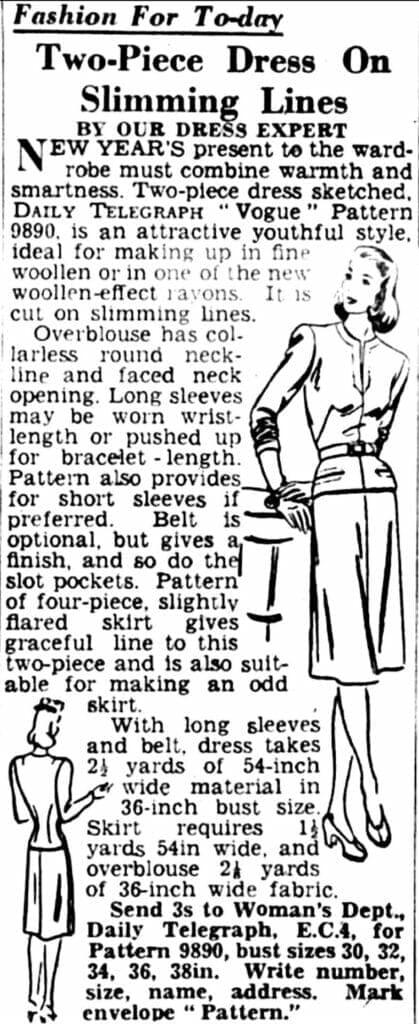
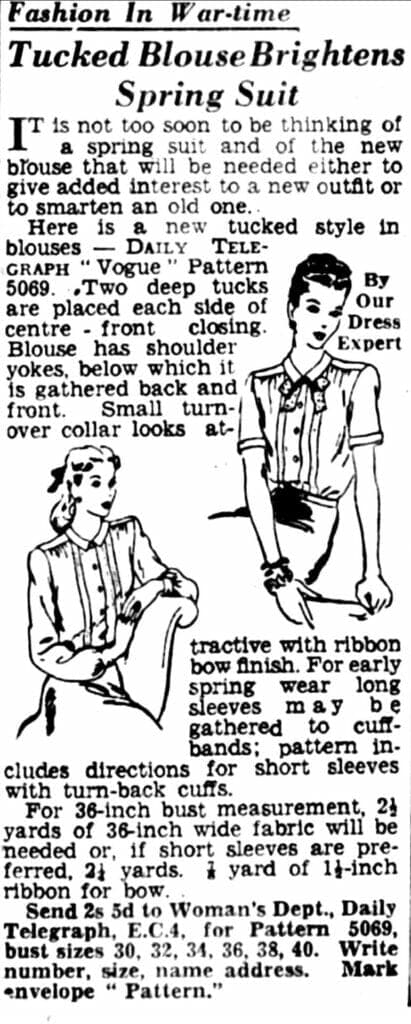
Wartime Rules Lifted
The end of WWII also saw fashions changing, as regulations were dropped. Peacetime marked the return of older ways of styling which were practised prior to WWII but got banned during the war. For instance this article highlights the lift on the ban of the ‘large bellows patch pockets’ with ample pleats on Amy and A.T.S. officers’ uniforms, which during the war were forbidden and replaced by the introduction of a more ‘austere style’. This reiterates the idea that fashion trends are repetitive and cyclical.
Indeed, some of today’s fashion trends, such as high-waisted, pleated skirts, have previously been fashionable, and are now just re-emerged in today’s trends, unsurprisingly known as ‘vintage style’ high-waisted skirts!
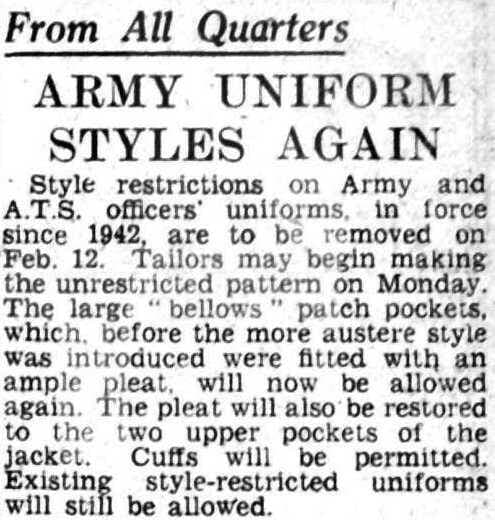
Biker Jackets and the Youth
From the late 1940s to the mid-1960s the fashion industry had been receiving and embracing global influence to generate growth. The popularity of motorcycling or bike racing sport in America in the late 1960s could have been seen as what significantly influenced the mostly black industrial cowboy jacket trend among the youth.
During this period (and arguably in all periods!), fashion influenced people’s lifestyles and vice versa – how they lived their lives, whom they spent their time with, the kinds of hobbies that people did. People were judged by others based on what they wore, the places they hung out, in or around. For instance, the Daily Telegraph Reporter article from 1961 below, stated that motorcyclists were usually found at coffee bars. Thus, fashion created identity and a sense of belonging through association, whether good or bad. Moreover, fashion could create a reputation for an individual or a group.

High Fashion Demand
As the increase in female non-workwear occurred globally after WWII so did the supply and demand for high-end fashion clothing. This article shows that London became the high-end fashion hub which tasked itself with meeting the demand to manufacture non-utility clothing for women globally. This meant that there was a rise in the need for skilled designers and that the economy would grow rapidly due to fashion item exports during this time. Thus the fashion industry in this region experienced quite significant growth after the Second World War, evident in many of the sources in The Telegraph Historical Archive.
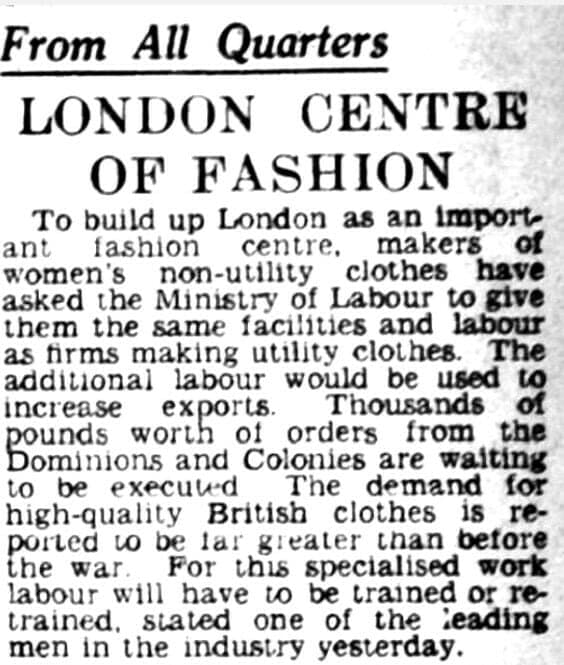
The Fashion Industry Flourished Post-War
Gale Primary Sources is a versatile research database and can be used to investigate numerous social and cultural topics with fashion, as well as the linked economics and politics. In this blog post I explored the evolution of the fashion industry post-World War II using The Telegraph Historical Archive and discovered that, despite the war slowing down the growth and development of the fashion industry for several years, it returned with a flourish post-war, and experienced a considerable boost in scale, influence and creativity.
If you enjoyed reading about the boost in the fashion industry after World War Two, using The Telegraph Historical Archive, you may like:
- Liberating, Stultifying or Provocative: Mary Quant’s Miniskirt
- Fashion and the Eighteenth-Century Public Sphere: from Tatler to Twitter
- From Coupons to Cocktail Dresses: tracking changes to women’s wartime fashion using the Picture Post Historical Archive
- Comfy in a Corset – Why Nineteenth-century Underwear Isn’t as Scary as You Think
- African Hairstyles – The “Dreaded” Colonial Legacy
Blog post cover image citation: Design created using images from this blog post, plus the following: “The Children’s Daily Telegraph.” Daily Telegraph, 6 Jan. 1945, p. 4. The Telegraph Historical Archive, https://link.gale.com/apps/doc/IO0709458431/TGRH?u=webdemo&sid=bookmark-TGRH&xid=8cb2b210

